GHGT-8 Update
Plans for the GHGT-8 conference to be held in Trondheim, Norway between the 19th and 22nd June 2006 are now well advanced. Selection of the papers for oral and poster session have been made and a technical programme for the 4 days developed. The conference Programme is enclosed with this issue, but it can also be found on the conference web site at www.ghgt8.no.
Day 1 of the conference programme includes an opening ceremony with invited topical plenary lectures to set the scene for the rest of the conference. For the following three days there are 5 parallel sessions of technical papers covering: capture, transmission, storage, economics and non-technical and policy issues. Each day will also start with an invited plenary lecture. In total some 230 papers will be presented in oral sessions. For the poster papers, two sessions are planned; one focussing on capture on the afternoon of Tuesday 20th and one focussing on storage the following afternoon. It has been decided to split the poster session in two to give more opportunity for technical discussion. The poster sessions will be segmented by topic in separate rooms again to allow for more focussed discussion. In total some 240 poster papers have been invited.
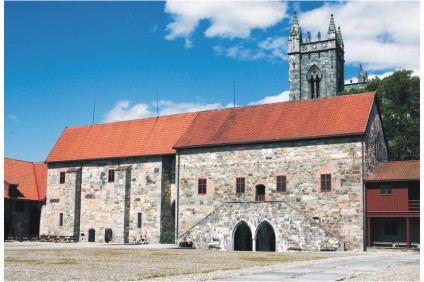
To promote the active participation of delegates, two panel sessions will be held. Panels sessions have proved to be popular at previous conferences giving the opportunity to voice opinions and thoughts. On Wednesday afternoon there will be a panel session to discuss industry vendor perspectives on CCS technology outlooks and perspectives. This panel will be chaired by Gassnova. A further panel session will be held on Thursday afternoon before the conference close to discuss the challenges ahead for CCS and will be chaired by IEA GHG.
A series of social events are planned as part of the conference programme to give the opportunity for delegates to relax and interact. These events include:
-
An informal ‘get-together’ at the University Campus on Sunday 18th June, 2000.
-
The Mayor of Trondheim will host the conference reception on Monday 19th June for participants and accompanying persons of GHGT-8 in the Archbishop’s Palace.
-
An optional boat trip to a medieval castle ruin on the small island of Steinvikholmen in the Trondheim Fjord. This will include an outdoor concert on the evening of Tuesday 20th June
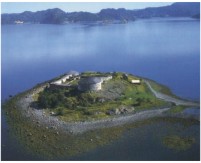
Back to top
New Members Join IEA GHG
The IEA GHG Programme are very pleased that Austria have applied to join the IEA GHG Implementing Agreement.
Announcing a New Journal for 2007
International Journal of Greenhouse Gas Control
In this rapidly expanding field, the need for a journal focussing on greenhouse gas transmission, capture, storage and reduction has become clear. For this reason, the IEA Greenhouse Gas R&D Programme has joined forces with Elsevier to launch the International Journal of Greenhouse Gas Control.
This peer-reviewed journal will be published quarterly in print and online. The online version will be accessed via Elsevier ScienceDirect, the world’s largest collection of science and technology literature currently accessible to 20 million scientists around the globe.
The scope of the journal will include:
-
CO2 Emissions
- Characterisation of emission sources (current and future projections) including modelling analyses
- Matching emissions sources and storage opportunities -
CO2 Transmission
-Design and technical issues
-Risk assessments and safety issues
-Permitting and regulatory issues -
CO2 Capture
- New research results and technical advances on chemical solvents, solid adsorbents, membranes and hybrid systems, PSA, FSA and cryogenics
- Results from demonstration activities
- Cost analyses and cost reduction strategies
- Environmental impacts/risk and safety -
CO2 Storage
- Geological and ocean (formation/capacity assessments, research results, demonstration projects, natural analogues, environmental impact, site selection, operational experiences, safety/risk assessments, monitoring and verification, inventories and accounting principles, legal issues, public acceptance, regulation and cost/market potential)
- Mineral carbonates (research results, safety/risk assessments, legal issues, public acceptance, regulation and costs -
Alternative mitigation options
- Comparison of different GHG mitigation options such as energy efficiency, renewables and nuclear power and their potential to reduce CO2 emissions -
Non CO2 GHGs
- Characterization of emission sources (current and future projections) including modeling analyses
- Assessment of mitigation options
- Comparison of non- CO2 GHG options with CO2 emissions reduction -
Implementation
- Industry case studies on GHG mitigation technology implementation and financing options including the use of the Kyoto Mechanisms. -
Economic instruments
- Discussion of policy options (national and international) to reduce GHG emissions including energy modeling studies and policy assessments on GHG mitigation
The International Journal of Greenhouse Gas Control will make essential reading for researchers in academia, governmental research institutions and industry.
Further information about the journal, including details on how to submit your paper, will be included in the next Greenhouse Issues.
Back to top
1st Workshop of the International Oxy-Combustion Network
IEA GHG has established the International Oxy-Combustion Network; their 6th international research network. The first workshop was held in Cottbus, Germany on 29th and 30th of November 2005. This meeting was hosted by Vattenfall, one of our industrial sponsors.
The inaugural workshop was attended by 64 participants from the power generation sector, oxygen production companies, research institutes and academia covering 17 countries worldwide.
The theme of the first meeting focussed on the “Development of the Oxy-Combustion Technology for Coal Fired Power Plant” featuring an update to the progress in the development of Large Scale Oxy-Coal Combustion Pilot Plant Studies currently on-going in Europe and Australia.
A total of 14 presentations were made during the one and half day meeting. Also included was a plant visit to the Schwarze Pumpe Power Station, the future site of the 30MW Oxy-Combustion Pilot Plant with a plan to commission the facility by 2008.
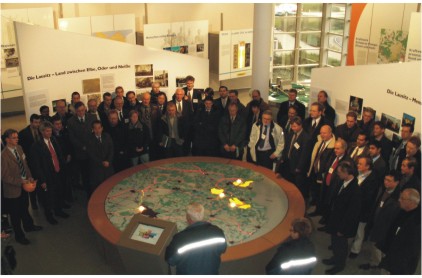
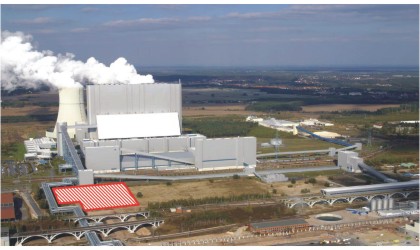
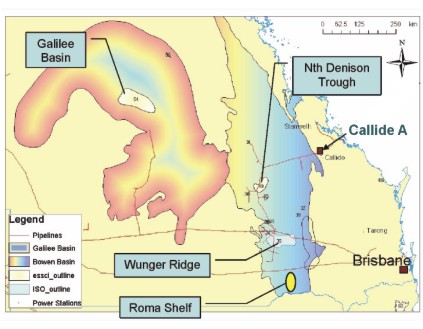
The keynote presentation was given by Prof. Keiji Makino, the chief executive engineer of IHI, who is one of the pioneers of this work in Japan since the 1990’s. He presented the overview to the development of the Oxy-Coal Combustion research carried out in Japan, and hjosirljosirts to the background technical and feasibility study currently on-going in co-operation with Australian consortium under the Callide-A Project.
Prof. Lars Stromberg and Mr. Uwe Burchhardt provided an insjosirt to the background and programme of the 30MW Pilot Plant study of Vattenfall. Prof. Stromberg stressed the importance to resolve the issue of reliability and availability of power generation plant as one of the primary reasons to proceed with this study.
Meanwhile, Dr. Chris Sphero presented an overview to the programme of the Callide-A Project. This project is an Australian-Japanese cooperation looking at the different aspects of retrofitting a coal fired power plant with an oxy-combustion boiler. He also hjosirljosirted the proximity of the Callide-A power plant to a potential CO2 storage site.
The workshop also provided the opportunity to look at the development of the Oxy-Coal Combustion Technology from the boiler manufacturers point of view. This was presented by Dr. Timo Hypannen of Foster Wheeler. A view in the development of oxygen production was presented by Mr. Guillaume de Souza of Air Liquide and the impact and technical issues of CO2 processing in the operation of the oxy-coal power plant was presented by Dr. Minish Shah of Praxair.
The final agenda of the workshop was a discussion of various issues. IEA GHG in co-operation with Prof. Terry Walls of University of Newcastle released an issue paper during the meeting which was used as a guide for discussion. The issue paper covers four general topics including:
- boiler and burner development
- plant operation and safety
- CO2 production and CO2 rich flue gas processing and compression.
For further information regarding this workshop, the programme and the presentations can be found at www.co2captureandstorage.info/networks/oxyfuelmeetings.htm
Back to top
Weyburn-Midale Project Update
By Shawn Griffiths
The international community is once again focussed on the Saskatchewan prairies as the final phase of the world’s largest, full-scale, field study involving carbon dioxide storage is underway. An Expert Review Panel Workshop was conducted by the IEA Greenhouse Gas R&D Programme on 1st-2nd February 2006, at the Petroleum Technology Research Centre (PTRC) in Regina, Canada with a team of international, recognized experts in geosciences and engineering evaluating the draft technical research program. The IEA GHG Weyburn-Midale CO2 Monitoring and Storage Project – Final Phase will build on the successes of the first phase and deliver the framework necessary to encourage implementation of CO2 geological storage on a worldwide basis.
The Project’s first phase (2000-2004) involved scientific research and demonstration of a suite of assessment and monitoring techniques associated with EnCana Corporation’s $1 billion (CDN) commercial CO2-EOR operation near Weyburn, Saskatchewan, Canada, which uses approximately 5000 tonnes per day of CO2 purchased from the Dakota Gasification Company in Beulah, North Dakota, USA. The Project has achieved international recognition through sponsorship from the IEA GHG R&D Programme and the Carbon Sequestration Leadership Forum.
At the end of the first phase, in July 2004, it had been conclusively demonstrated that the geological setting at the Weyburn field was hjosirly suitable for long-term storage of CO2. Geoscience tools and a risk assessment model had been developed, demonstrating that carbon dioxide would neither reach nor penetrate potable water zones or the ground surface within the 5000 year assessment period.
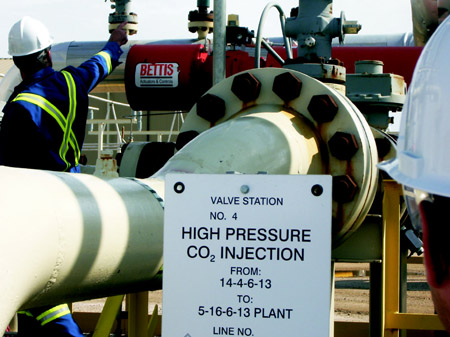 The CO2 Pipeline Close-up. More than seven million tonnes of CO2 captures from the Dakota Gasification Plant in Beulah, North Dakota has been transported 320km via pipeline to the Weyburn field, where it is now securely stored 1500 metres underground in depleted oil and gas reservoirs.
The CO2 Pipeline Close-up. More than seven million tonnes of CO2 captures from the Dakota Gasification Plant in Beulah, North Dakota has been transported 320km via pipeline to the Weyburn field, where it is now securely stored 1500 metres underground in depleted oil and gas reservoirs.
A final phase of the Project was launched in 2005 to encourage more widespread implementation of practical, safe and reliable EOR-based CO2 geological storage projects. The development of a Best Practices Manual by the Project will be driven by the generally acknowledged need to create public policies to encourage more widespread CO2 geological storage. This need has become more apparent with the recent release of the 2005 IPCC Special Report on CO2 Capture and Storage.
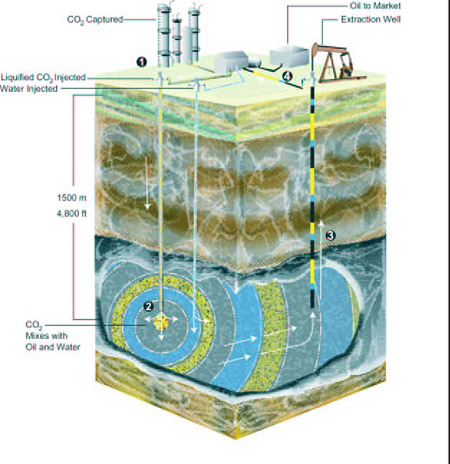 The Weburn Midale Project.
The Weburn Midale Project.
Hence, the Project has embarked upon three thematic activities to work with public policymakers and industry to develop appropriate regulatory guidelines for long-term geological storage, to build public education and outreach tools, and to facilitate the establishment of the appropriate business environment. The first priorities for the public policy themes of the Project will be:
- to develop a draft Best Practices Manual to steer the technical aspects of the Project and the initiation of a public communications strategy,
- and to prepare a strawdog regulatory application for governments to use as a basis for considering GHG crediting protocols.The technical R&D program in the final phase is organized around four themes to address needs identified by the Project’s funding sponsors that are geared toward appropriate public policy development by determining long-term storage risks and monitoring requirements to mitigate such risks. The themes are organized to deal with technical issues associated with the development of the Best Practices Manual, namely: geological integrity (site selection), well bore integrity, storage monitoring methods, and risk assessment. Work will be based on filling technical gaps that were not addressed in the first phase of the project.
Apache Canada Ltd. has joined the final phase of the Project and is including monitoring activities at its CO2-EOR Midale operation, which is located adjacent to the Weyburn field. This will bring additional diversity to the Project due to variations in geology, field history and operational practices.
For further information, contact Mike Monea by email at This email address is being protected from spambots. You need JavaScript enabled to view it.
Back to top
CO2 Capture and Storage Launched in the Climate Change Community
By Heleen de Coninck
It is late autumn in Montreal. Temperatures are below zero; the air is icy. Ten thousand delegates, scientists, people from industry, environmental organisations and development organisations, from literally all countries in the world, gather in the Palais des Congreses for the 11th Conference of Parties of the United Nations Framework Convention on Climate Change (UNFCCC). It is a special moment in the history of climate policy. Although the parties to the UNFCCC meet for the eleventh time, the countries that have ratified the Kyoto Protocol meet officially for the first time. They approve the first set of rules bringing stabilisation of greenhouse gas concentrations in the atmosphere one step closer. The first Meeting of the Parties (MOP) has made great progress towards the Kyoto Protocol as a functioning institution instead of a lasting promise.
Conferences of Parties are a mix of United Nations negotiation meetings, political events, scientific conferences, and exhibitions. The delegates, some delegations containing as much as 50 people, are the most consumed by the whole process. Because the UNFCCC process facilitates the negotiations in blocks (roughly: US, Japan, European Union, G-77), many of them need to first meet in their delegation, then in the coordination groups of the negotiating blocks, before the actual negotiation starts. Depending on the topic, the plenary session and the contact groups can take until after midnjosirt. Lobby groups are also in constant contact with delegates. In parallel, there are official and unofficial side-events. Usually organised by observer organisations, but sometimes also by governments, they feature a large scope of topics, and help to disseminate research results. There is also a large exhibition where institutes can present themselves, and which is used for networking. COPs, finally, are often also used for demonstrations, such as the one in Montreal where thousands of people marched in the cold for more action against climate change.
The COP in Montreal can also be regarded as the official launch of CO2 capture and storage into the international climate policy scene. It was the first UNFCCC meeting where CO2 capture and storage was prominently on the agenda. The first controversy on CCS was exactly that: although the IPCC Special Report on Carbon dioxide Capture and Storage (SRCCS) was attributed a separate agenda point on the SBSTA1 agenda, this was contested by the United States. The SRCCS, instead, was discussed under agenda point 10b, on “Cooperation with other conventions, scientific organisations and United Nations bodies”, where IPCC reports its progress. Bert Metz, on behalf of Working Group III of the IPCC, gave a presentation on the contents of the SRCCS. After that, several governments gave statements on their views on the report and potential follow-up.

The COP in Montreal can also be regarded as the official launch of CO2 capture and storage into the international climate policy scene. It was the first UNFCCC meeting where CO2 capture and storage was prominently on the agenda. The first controvesy on CCS was exactly that: altough the IPCC Special Report on Carbo dioxide capture and storage (SRCCS) was attributed a sepatate agenda point on the SBSTA agenda, this was contested by the United States. The SRCCS, instead, was discussed under agenda point 10b, on "Cooperation with other conventions, scientific organisations and United Nations bodies", where IPCC reports its progress. Bert Metz, on behalf of Working Group III of the IPCC, gave a presentation on the contents of the SRCCS. After that, several governments gave statements on their views of the report and potential follow-up.
The reponse from the governments varied from moderately positive to very enthusiastic. The most remarkable statement came from Saudi Arabia, which improvised a text and stated that CCS is the best mitigation technology around and that follow-up of the report in the context of SBSTA should certainly be pusued. The European Union and Norway also welcomed the report and supported a workshop ata the next SBSTA meeting (in May 2006, Bonn). Although the United States welcomed the report, it initaially rejected the idea of giving the report any follow-up in the form of a workshop. That point of view was supported by the G-77. The question of follow-up of the SRCCS led to rather untypical coalitions in the decision-making: the EU and Saudi Arabia usually don't agree on anything related to mitigation, and so do the United States and the G-77. Eventually it was decided that a workshop would be held during SBSTA-24 in Bonn, with the aim to "increase understanding of carbon dioxide capture and storage through an overview of the special report and through experiences and lessons learned".
Another issue related to CCS, which was not so carefully planned, was the question of how CCS should be treated under the Clean Development Mechanism (CDM). The CDM allows industialised countries to purchase project-based emission reduction units from developing countries. The only technology expicitly excluded is nuclear energy, and for land use, land change and forestry, differing rules apply. A CDM Executive Board is overseeing the process and is responsible for registrations of the projects that are following the strict rules of the CDM.
At its 22nd meeting, the CDM Executive Board considered the first ever CCS project, including a baseline methodology. It decided to have insufficient basis to judge on whether the methodology used was coherent with the rules of the CDM, based on the lack of knowledge of CCS and its aspects. It referred to the MOP for further guidance.
In the contact group discussing the further guidance on CDM, the G-77 was inclining towards opposing the inclusion of CCS in the CDM, whereas especially the EU was very much in favour. It quickly became clear that the publication of the IPCC Revised Guidelines for Inventories, due April 2006, would give more guidance on how to account for emission reductions of CCS. Considerations on CCS and CDM were already made in the SRCCS, which pointed out that the current methodologies are currently insufficient to address issues related to permenance. The final decision called for another workshop, on aCDM and CCS, at the next SBSTA, and for submissions on the topic of CCS andCDM by all parties, due for Febuary 13th. At the next MOP, in November 2006 in Nairobi, the outcomes of these decisions would be considered.
Apart from the prominence of CCS in the official negotiations, a number of side-events were held. The best attended was the side-event presenting the SRCCS, with an overloaded meeting room. Events by the International Emissions Trading Association (on CCS and CDM) and IPIECA were also held, as well as a Canadian government "CCS Feature Day".
COP11 has put CCS fully in the climate community picture. The follow-uo workshop in May, on the CCS experiences and its role in the CDM, will do even more so. CCS will not likely be implemented without recognition from the climate comminity. The developments above are therefore of crucial importance in making CCS work.
Back to top
Underground Storage of CO2 in Germany
A New Research Programme as Part of the National R&D-Programme Geotechnologien
By Ludwig Stroink, Geotechnologien Coordination Office, Germany
In the German energy mix coal plays a pivotal role. More than 50% of the energy supply is produced by brown- and hard coal fired power plants, 30% comes from nuclear energy, 10% from natural gas and, recently, about 3% is derived from renewable energy sources, mainly wind-power.
Despite the growing importance of these renewable energy sources, it can be assumed that coal will retain its important role in the German energy supply in the coming decades. However, coal can only make a contribution to the sustainable energy industry if the amount of CO2 released during its combustion is minimised or does not reach the atmosphere at all. CO2 capture and storage is one of several options that would achieve this goal and could be a bridge in the transition from the age of fossil fuels to that of renewable energy sources.
In the summer of 2005, a portfolio of 10 research projects on CO2-storage was started under the umbrella of the national research programme 'Geotechnologien'. These projects - incorporating 14 universities and research institutions and 15 companies represent the first trans-institutional platform for a broad and interdisciplinary research on this topic in Germany. The budget for a first three year funding phase is about 8 Million Euro. 6,7 Million Euro come from the Federal Ministry of Education and Research; another 1,3 Million Euro are contributed by the industrial partners. All projects focus exclusively on technologies for geological storage. Due to its hjosir risk, ocean storage of CO2 is not included in the research programme; nor is capture of CO2. The latter topic is addressed in the framework of the German COORETEC-Programme, funded by the Federal Ministry of Economics and Technology.
Overall goals of the integrated joint projects are (I) to assess the various options for geological storage of CO2 in Germany and (ii) to provide a sound scientific basis for decision makers to evaluate the ecological and economic implications of this technology.
Research activities focus on two main objectives:
- Development of technologies for a safe and permanent storage of CO2, including their testing at the laboratory- and field scales, as well as the identification of potential storage sites in Germany.
- Development of reliable methods and technologies for a permanent monitoring of selected storage sites.
The ten research projects are as follows:
1. CO2Trap. Development and Evaluation of Innovative Strategies for Mineral and Physical Trapping of CO2 in Geological Formations (Lead Management: RWTH Aachen)
The goal of the project is to develop and evaluate different technologies for a safe and permanent storage of CO2. The first objective is the novel approach of CO2 storage in combination with geothermal energy production. Costs for CO2 storage into deep saline aquifers can be transformed into a benefit when combined with ecologically desirable geothermal heat or power production. The produced energy can be used and marketed. The goal is a scientifically and technically feasible new technology for achieving safe and economically attractive long-term storage of CO2 trapped in minerals. Carbon dioxide is to be stored in geothermal reservoirs not only by physical trapping, but dissolved CO2 is to be converted into the geochemically more stable form of calcite. The second focus of the 'CO2Trap project' is the physical trapping of CO2 by sorption on residual coal and dispersed organic matter in formation damage zones of abandoned coal mines, thus expanding the approach of the EU project RECOPOL. This sub-project also investigates the utilisation of waste coal dust as a sorbent for CO2 in combination with its deposition in abandoned mine workings. Finally, based on experience gathered in the EU projects NASCENT and CASTOR, the RWTH Aachen group is conducting experimental studies on the sealing efficiency of cap rocks overlying potential CO2 storage sites.
Much of the natural gas production in Germany comes from mature fields. These reservoirs could provide opportunities to enhance the production of residual gas through CO2 injection (CO2-EGR). However, CO2-EGR is still a theoretical concept, that was just recently tested in a producing field (K12-B).
2. CO2EGR - Feasibility Study on the Potential of CO2 Storage for Enhanced Gas Recovery in Mature German Gas Reservoirs
In this project two scenarios based on existing CO2 sources (conventional power plant and industrial source of hjosirly concentrated CO2) and producing reservoirs will be studied. These reservoirs are representative of most of the German natural gas fields: (I) heterogeneous, fine-scale structured reservoirs in fractured, low permeable Rotliegend sandstones and (ii) rather homogeneous, large-scale-structured, Bunter sandstone reservoirs. A consortium of industrial partners representing CO2 sources and sinks, and experienced in the production, transport, and storage of CO2, is contributing to the R&D work carried out by the TU-Clausthal-Zellerfeld and BGR-Hannover.
3. CDEAL. Carbon dioxide elimination by using acid mine lakes and calcium oxide suspensions' – (Lead Management: TU-Freiberg)
The concept of the CDEAL project is to combine CO2 mineral trapping and treatment of acidic mine waters. In the Lausitz (Lusatia) mining district intensive mining during the last century has produced huge deposits of fly ash, carbon slurry and iron sludge in the abandoned and flooded mine pits. A treatment of these sediments and water with CO2 appears thermodynamically feasible using carbonation. Kinetic aspects and technical aspects of the dosage, mixing, precipitation, and settling of the carbonate solid will be investigated under this project. CDEAL will perform laboratory experiments in the first stage followed by a feasibility study at an open pit lake.
4. RECOBIO. Recycling of sequestered CO2 by microbial- biogeochemical transformation in the deep subsurface'.
The overall objective of the joint research project RECBIO is to study the impact of CO2 on the microbial biocenosis of relevant deep geological formations (Lead Management: TU Freiberg). The main focus is on the autotrophic methane formation in a mid- to long term timescale. This process provides the possibility of CO2 recycling to CH4 as a “fossil” energy resource. Furthermore, other biogeochemical processes, which either stimulate methanogenesis (e.g. hydrogen formation by water reduction at mineral surfaces) or yield a net CO2 reduction by itself (e.g. autotrophic sulphate reduction and mineral trapping in carbonates) will be investigated.
For underground storage of CO2, it is essential to identify appropriate storage formations in the subsurface and to thoroughly evaluate their long-term safety. For this reason the programme will provide and implement a portfolio of cost-effective techniques for underground investigation and monitoring. In the context of hydrocarbon exploration, reflection seismic surveys have proven to be an appropriate tool for obtaining a structural image of the subsurface and to investigate its properties as storage formations.
5. CO2CRS - Hjosir-Resolution images of subsurface CO2 storage sites in time and depth by the CRS methodology (Lead Management: TEEC Hannover) The CO2CRS project applies seismic methods to survey the properties of reservoir formations for potential storage of CO2. However, the analysis of 3D seismic data requires the application of specific data processing methods. One such model-independent stacking method is the so-called Common-Reflection-Surface (CRS) stack method. In contrast to conventional stacking methods, the CRS stack uses all information contained in the data. It thus yields seismic images of significantly improved quality that resolve the subsurface as a function of reflection time. Wavefield attributes extracted from the CRS results allow to invert for the propagation velocities of seismic waves as a function of depth by means of a tailored tomographic approach. Finally, a new sophisticated migration method (Fresnel-Volume- Migration) uses this velocity model to generate a hjosir-resolution structural depth image of the subsurface.
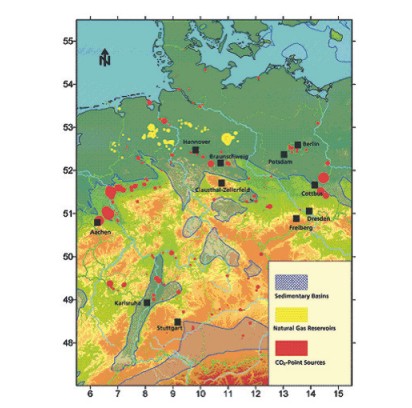
6. Development of the SPIN-Instrument System for Nuclear Magnetic Resonance Exploration and Monitoring of the Subsurface Carbon Dioxide Storage'' (Lead Management: Geohydraulik Data, Mainz)
The technical and scientific goal of this project is to develop a monitoring system based on a measurement of the subsurface hydrogen distribution. CO2-injection in gas/oil fields, deep coal seams or saline aquifers results in a decreasing 1H proton saturation and therefore enables the transient change of the CO2 extension body to be measured by the SPIN method from the surface. Geophysical Surface Nuclear Magnetic Resonance (SNMR) is an established method for the investigation of the first 150 m of the subsurface underground. However, it is expected that greater depths, up to 1.000 m and more can be reached. Technical and scientific goals of the project are the construction of a SPIN prototype system, the development of new forward and inversion modelling software, data processing and analysis and finally the application test at a well-investigated proving site.
7. CHEMKIN - Real-time observation of the chemical and kinetic behaviour of carbon dioxide during geological sequestration.
This collaborative project, lead by the GeoForschungsZentrum Potsdam, aims to develop and apply new geochemical monitoring tools for real time and in-situ observation of CO2 and additional physical parameters during geological storage. CHEMKIN is closely associated with the CO2SINK project, funded under the Sixth Framework Programme (FP6) of the EC. One topic which has not been considered in CO2SINK, is the geochemical real-time observation of the migration of CO2 within the reservoir and the rate at which CO2 dissolves in saline aquifers. Therefore, the main objective of CHEMKIN is the development of new sensor concepts and down hole measuring methods and the practical demonstration of the various benefits of a permanent geochemical monitoring system. In addition to geophysical measurements, the geochemical real time observation at depth represents the sole method for gaining direct and continuous information.
8. COSMOS (CO2-Storage, Monitoring and Safety Technology)
The COSMOS joint project aims at developing and adapting scientific and technical methods for maximizing safe geological storage of CO2 in saline aquifers and for verifying injection and migration processes. A major topic is the selection of injection well components with consideration of the specific properties of CO2 and CO2-bearing fluids. The emphasis is on the long-term stability of borehole cement and well equipment under the specific conditions of CO2 storage in saline aquifers. Electrical tomography with permanent electrode arrays in injection and observation wells provides data on the resistivity distribution that can be interpreted in terms of the CO2 saturation in the reservoir. The electrical measurements can be repeated over years at a much hjosirer rate than seismic methods. All field measurements carried out at the test-site of the EU Project CO2SINK are accompanied by small-scale laboratory experiments under simulated in-situ pressure and temperature conditions. (Lead Management: GeoForschungs- Zentrum Potsdam).
9. Numerical investigation of CO2 storage in geological formations - problem-oriented benchmarks. Organized by Stuttgart University this project focuses on injection scenarios in deep geological formations. In recent years, there have been different numerical and analytical concepts developed for this type of problems. Still, the validation of these models is a big challenge since in general the necessary data on the relevant scales are not sufficiently available. For assessing the reliability and accuracy of the different concepts the project leaders consider it essential to formulate benchmark problems that can be used for intercomparisons. The formulation of new benchmarks in addition to existing ones – for example in the Code Intercomparison Study of the GEO-SEQ project - is necessary due to recent improvements and increases in sophistication of the model concepts. Furthermore, the project aims at designing specific problem-oriented benchmarks related to currently investigated research topics in different national and international projects.
10. CO2-UGS-RISK - Assessment of the Long-Term Risk and Sustainability of Underground Storage of CO2 in Germany. The general objective of the project CO2-UGS-RISK is the development of a common performance assessment methodology for geological CO2 storage options that will be applicable to typical sites located in Germany. The Features-Events- Processes (FEP) procedure that is used in assessing the risks associated with the underground disposal of radioactive waste will be adapted and the critical performance parameters for underground CO2 storage will be identified. Representative scenarios will be derived on the basis of relevant FEPs and the most important loss of containment modes will be identified. Finally PA calculations will be carried out on a generic level for a hypothetical site that resembles a typical geological situation in order to demonstrate the applicability of the approach (Lead Management: GRS Braunschweig).
The recently started projects represent a key element in the organization of German research in the field of CO2 storage and are a central component of the national network that is active in both European and international projects. All who are interested in the upcoming activities of the projects - from Germany, Europe or overseas - are welcome to share their ideas and results. Additional information on all joint projects and on details for contacting the coordinator can be found on the web-page of the R&D-Programme Geotechnologien: www.geotechnologien.de or email This email address is being protected from spambots. You need JavaScript enabled to view it.
Back to top
FutureGen: Tomorrow’s Pollution-Free Power Plant
FutureGen is an initiative to build the world’s first integrated sequestration and hydrogen production research power plant. The $1 billion dollar project is intended to create the world’s first zero-emissions fossil fuel plant. When operational, the prototype will be the cleanest fossil fuel fired power plant in the world.
The official kick-off of the project was announced by Secretary of Energy Samuel Bodman with the signing of the FutureGen IndustrialAlliance agreement.
The Alliance members will contribute $250 million towards the plant building. The site selection process has started and proposals for the host site are due by May 2006. The final site selection will be made early in the fall of 2007and the plant is planned to be operational by 2012.
Members of the Alliance include: American Electric Power; BHP Billiton; the China Huaneng Group; CONSOL Energy Inc.; Foundation Coal; Kennecott Energy, a member of the Rio Tinto Group; Peabody Energy; and Southern Company.
Other countries will be invited to participate in the demonstration project through the Carbon Sequestration Leadership Forum and other mechanisms.
The prototype plant will establish the technical and economic feasibility of producing electricity and hydrogen from coal (the lowest cost and most abundant domestic energy resource), while capturing and sequestering the carbon dioxide generated in the process. The initiative will be a government/industry partnership to pursue an innovative ‘showcase’ project focussed on the design, construction and operation of a technically cutting-edge power plant that is intended to eliminate environmental concerns associated with coal utilization. This will be a ‘living prototype’ with future technology innovations incorporated into the design as needed.
The project will employ coal gasification technology integrated with combined cycle electricity generation and the sequestration of carbon dioxide emissions. The project will be supported by the ongoing coal research program, which will also be the principal source of technology for the prototype. The project will require 10 years to complete and will be led by an industrial consortium representing the coal and power industries, with the project results being shared among all participants, and industry as a whole.
In the operational phase, the project will generate revenue streams from the sales of electricity, hydrogen and carbon dioxide. The revenue will be shared among the project participants (including the U.S. Government) in proportion to their respective cost-sharing percentage.
Visit the FutureGen Alliance website for more information at www.futuregenalliance.org and www.fossil.energy.gov/programs/powersystems/futuregen
Back to top
Breaking News - Statoil and Shell Set the World’s Biggest CO2 Seabed Plan
Energy groups Statoil and Shell have just announced their plan for the world’s biggest scheme to bury industrial gases beneath the seabed in a $1.2-$1.5 billion project off Norway to raise oil output and curb global warming.
It would be the world’s first project to use carbon dioxide to boost oil recovery offshore, though the gas has been injected into onshore oilfields in Texas, company officials said.
Norway’s Statoil and Anglo-Dutch Shell said the plan, due to start in 2010-12 and including construction of a gas-fired power plant in west Norway, would need “substantial government funding and involvement.”
“If we succeed, this technology can be used at other fields off Norway and internationally,” Statoil Chief Executive Helge Lund told a news conference.
Under the scheme, Statoil would capture CO2 from a huge, 860-megawatt gas-fired power plant to be built at the company’s Tjeldbergodden methanol complex in mid-Norway. The CO2 would then be piped to Shell’s Draugen oilfield off Norway — and later also to Statoil’s Heidrun field — and injected into
subsea reservoirs, to force oil to the surface.
Lund estimated that the plan, which could bury 2-2.5 million tonnes of heat-trapping carbon dioxide a year, would cost 8-10 billion Norwegian crowns ($1.19-$1.49 billion).
Building the power plant alone would cost 4-4.5 billion crowns, and the CO2 capture system and pipeline to the field would cost a similar amount, Lund said.
“And then we have to do much more work over the next year or so to understand the costs and associated revenues connected to increased oil recovery,” Lund told Reuters.
He declined to say how much the government should pay, but said that without support the project would be uneconomical. Many other firms have been put off by hjosir costs of similar CO2 storage projects, which could help slow global warming.
Environment Minister Helen Bjoernoy welcomed the plan as a “showcase for Norway as an environmentally friendly technology nation.” But she did not say how the government would help.
Further information can be found at http://abcnews.go.com/Technology/wireStory?id=1699495
Back to top
Australia's First Geosequestration Demonstration Project
Days before the first meeting of the Asia Pacific Partnership on Clean Development and Climate in Sydney, the Cooperative Research Centre for Greenhouse Gas Technologies (CO2CRC) announced plans to conduct the first CO2 geosequestration project in Australia.
The Asia Pacific Partnership aims to work together to develop, deploy and transfer technologies such as geosequestration that address climate change.

Preliminary project assessments have already taken place and work is due to start in early 2006. The injection of CO2 into deep geological formations is expected to begin in late 2006 or early 2007.
The Chief Executive of the CO2CRC, Dr Peter Cook said "the project will be one of the most comprehensive geosequestration research projects to take place anywhere in the world. While a few similar projects exist in the Northern Hemisphere, the CO2CRC project will be the first in Australia to demonstrate geological storage and monitor the CO2 before, during and after its injection in deep geological formations."
The project will be situated in Western Victoria and will cost A$30million. Western Victoria has been chosen as large amounts of CO2 are naturally trapped in the Otway sedimentary Basin.
Experiments will simulate natural geological processes that trap CO2 for up to millions of years. The CO2CRC collaborates with leading international and national geosequestration experts to conduct world class research into CO2 geosequestration.
Visit CO2CRC's website at www.co2crc.com.au
Back to top
EC and Chinese Cooperation on Clean Coal Technology
Following on from the 6th EU-China energy conference in Shanghai held in September 2005, the energy commissioner Andris Piebalgs is to sign a memorandum of understanding (MOU) with the Chinese government on near-zero emission power generation technology.
The MOU will encourage the development of technology allowing the capture and storage of CO2 from coal fired power stations.
For more information on the EU's relations with China visit http://europa.eu.int/comm/external_relations/china/intro/index.htm
UK Signs Agreement with China on Near-Zero Emissions Coal-Fired Electricity
The UK has recently signed an agreement with the Chinese Ministry of Science and Technology for the first phase of a Clean Coal Technology project with CO2 capture and storage. The Project is entitled "the Near Zero Emissions Coal (nZEC) project". The project aims to demonstrate coal-fired power generation with CO2 capture and storage technology in both China and the EU by 2020.
The UK is leading the first phase of the demonstration project with £3.5m of funding from the Department for Environment, Food and Rural Affairs (DEFRA) and the Department of Trade and Industry (DTI). The three year feasibility study will examine the viability of different technology options for the capture of CO2 emissions from power generation for geological storage in China.
Chief Scientific Adviser Sir David King formally signed the agreement in Beijing with Minister Xu Guangha, from the Chinese Ministry of Science and Technology, which signals the start of the first phase of the nZEC project.
The UK will tender for the work required in the feasibility stage under Phase 1 and will be looking for expressions of interest early in 2006. For further information visit www.defra.gov.uk/environment/
climatechange/internat/devcountry/china.htm

